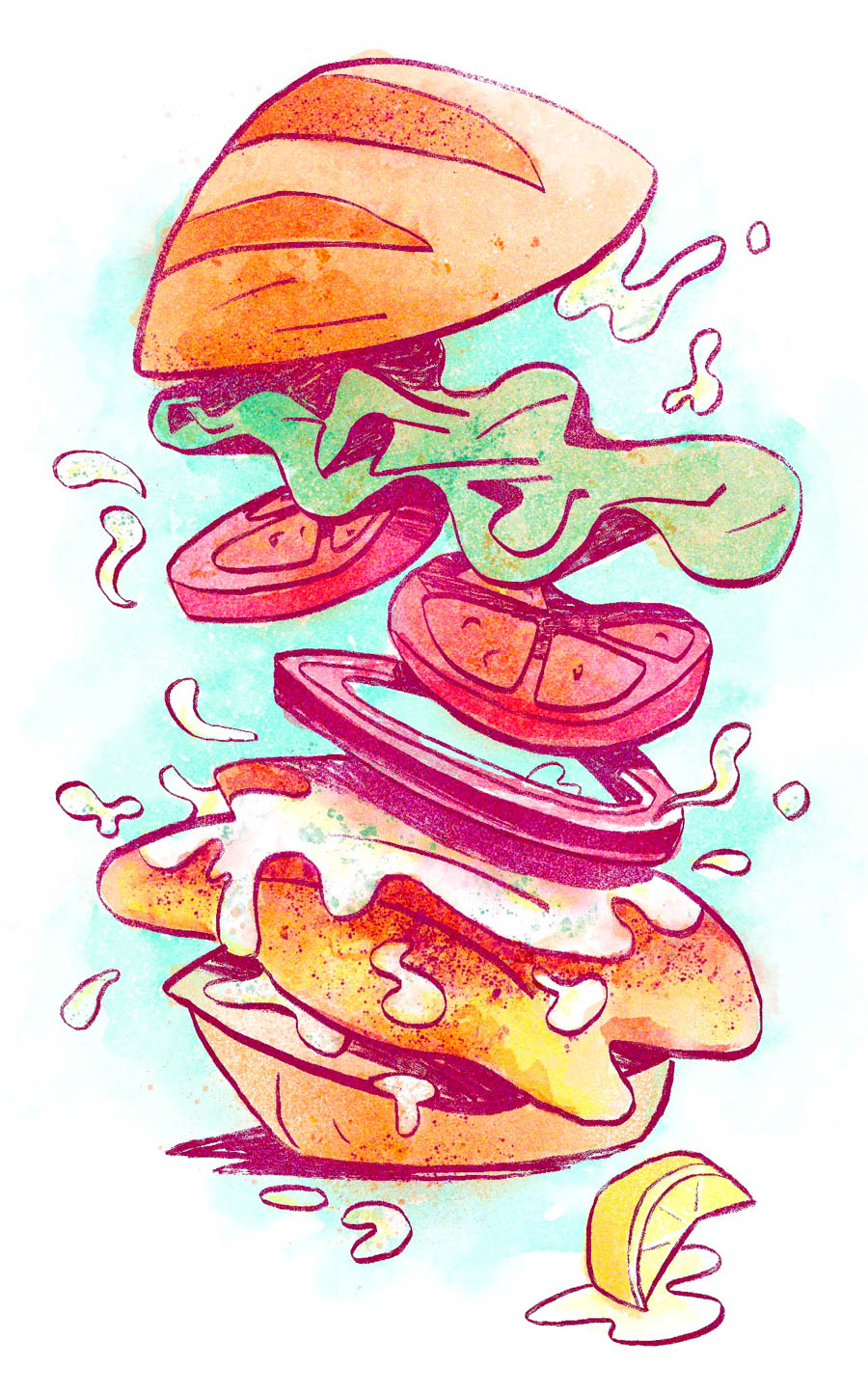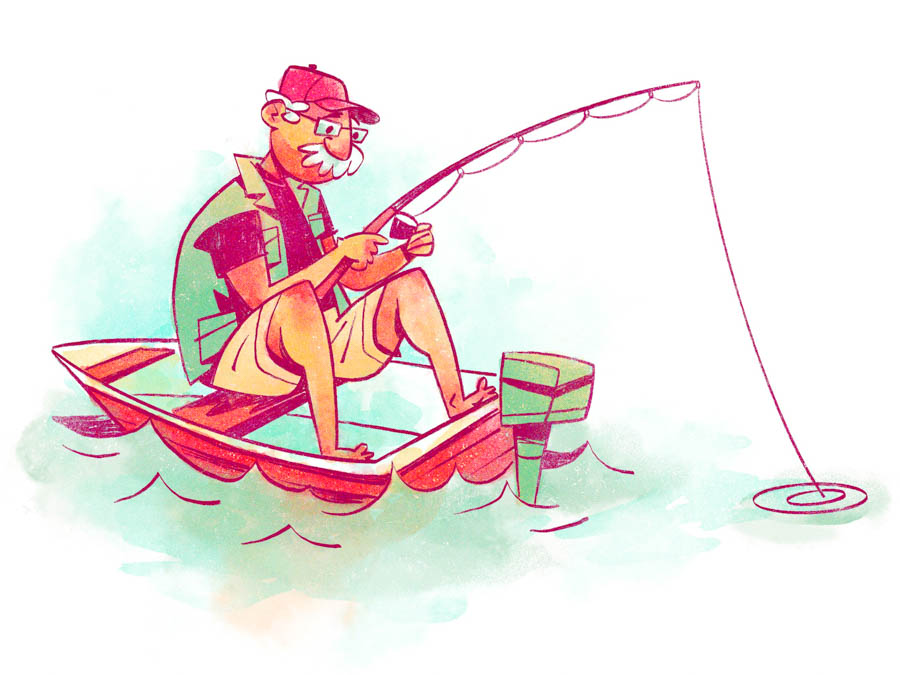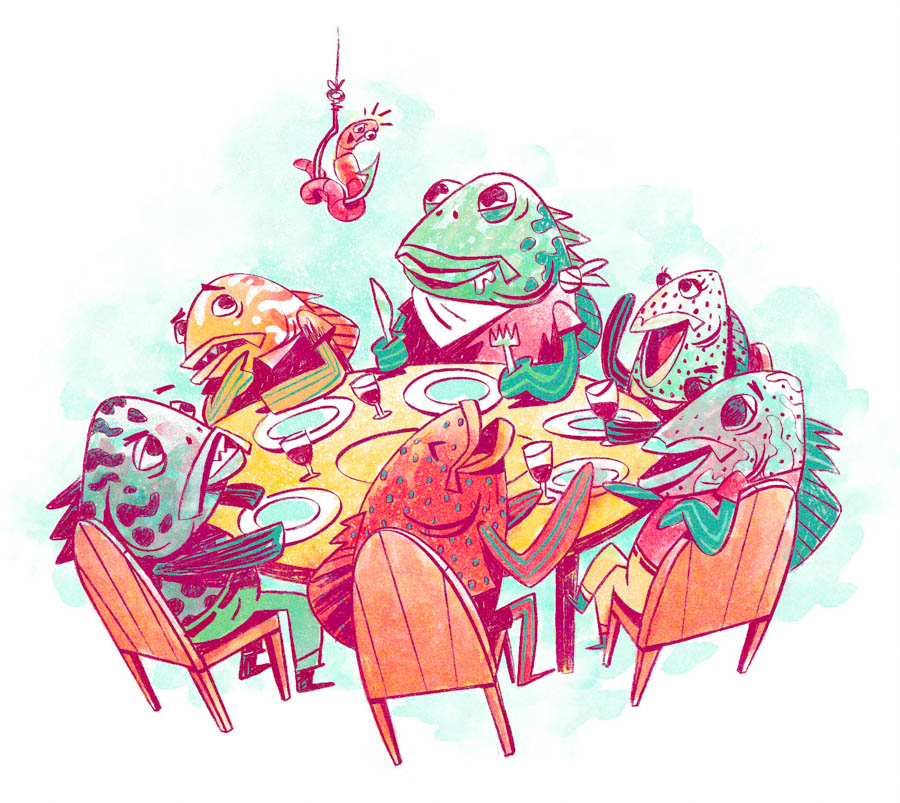For as far back as I can remember, my favorite lunch item has been the grouper sandwich. My first trip to this area came in 1979. I was a baby at the time, didn’t have much variety in my diet, but that changed as vacations here became a regular thing for my family. Throughout my childhood, we came here for all the breaks: summer, winter, spring, Thanksgivings, the odd Christmas — all punctuated by trips to see my grandparents on Siesta Key and Sarasota.
With apologies to my late grandmother’s culinary talent, which was formidable, the best thing I ate here — the thing I most looked forward to eating every trip — was the grouper sandwich. Of course, we couldn’t get them in my native suburban Chicago, which made me covet them even more. There was just something about the spice of the blackened seasoning, the combination of the fresh bun, the crispy lettuce, perhaps a sweet slice of tomato, a dab of some signature sauce and … dang. I want one now! My appreciation of this fish grew with every bite of every sandwich I tried, and the nuances from one restaurant’s take to another’s. As I’ve grown older, my love for the grouper sandwich has increased with (I am loath to admit) the same steady pace as my cholesterol. So sadly, the grouper sandwich remains a novelty, or as my six-year-old daughter, Summer, calls it, a sometimes food. It’s tough because the grouper sandwich is ubiquitous here. It’s a staple on every seafood restaurant’s menu.
Last year, commercial fishermen landed 5.3 million pounds of grouper, according to the Florida Fish and Wildlife Conservation Commission. The estimated value of that haul is around $25 million. And that’s not counting the money that diners and shoppers are plunking down for “market price” after restaurants and retailers factor in fuel, labor and transportation costs. Recreational fishermen added around 3 million pounds of grouper to that total. So popular is the grouper that shrines are built in its honor, like the 3,180-pound behemoth that sits outside of The Ugly Grouper on Anna Maria Island. And yet, this local obsession is just about as old as the area’s tourism industry itself. In the January 27, 1909 issue of St. Petersburg’s The Evening Independent, there’s an ad from the Mary Boat & Transportation Co. that shares the top ten reasons why you should patronize “The Prize Grouper Boat Florida,” which offered “her regular run of six days a week,” leaving from what is now Gulfport. (Reason No. 7 on the list: “We will not take your money when we know you can’t enjoy yourself.”) Judging by some of the hauls back then — the boat’s 18 passengers brought in 199 grouper earlier that same week in 1909 — it’s tough to imagine anyone not enjoying themselves. Of course, with the regulations and conservation efforts afoot today, that many grouper caught in one trip without a commercial fishing license could lead to a hefty fine and some jail time. So, how is it that this love of grouper has persisted and grown? Where does this love affair come from, and why can’t we get enough? Why is the grouper sandwich the indisputable, official dish of Southwest Florida?

How I learned to love the grouper
It wasn’t until I was fortunate enough to start fishing for grouper myself that I began to understand it. You start to feel that sense of history — a Hemingway-esque connection to anglers past — when you find yourself surrounded by nothing but water, equipped only with with dreams of hauling in an arm-length grouper … and a sophisticated GPS positioning system, sonar fish finder, endless bait options, and state-of-the-art rods, reels, and tackle. I started fishing for grouper fairly regularly here when we would come visit my wife’s parents. My father in-law, the writer David McGrath, is a seasoned fisherman and longtime contributor to Florida Sportsman. Over the years, he’s demonstrated to me the intricacies of catching red snapper, amberjack, sheepshead and more. Most importantly, he’s taught me how to find and catch the coveted grouper. The journey starts with a long boat ride. If you do it right, you spend more time on the ride than you do fishing. The 40-mile one-way trip takes you to anywhere from 100-120-food deep water. That’s where the larger grouper congregate. We go after red grouper, mostly. They’re feisty fish. If you’re on the right spot, they’re not difficult to attract, but they can be tricky to haul into the boat. They love to grab your bait and hide. Were it not for the unmistakable tug of something live at the onset, the angler would assume they have a snag. It’ll outwait you, too. Give your line as much slack as you want, try to coax it out, that grouper isn’t going anywhere. It’s this kind of behavior that makes grouper unique. I vividly remember catching my first keeper grouper that was more than 22 inches long, which was the size limit at the time. It struck my line with a force I hadn’t felt from any other fish. It scurried back and forth under the boat and I did my best to keep it on the line, reeling as I let the line down and gently coaxing it upward, just as David had shown me. I finally got it in the boat and we took it to the ruler. I remember thinking, so you’re what all the fuss is about. I had never so vividly and viscerally connected a food I covet to the act of procuring it. And my appreciation grew even more.

Fact. Grouper are amazing.
A note about grouper: There are 13 species of grouper that are commonly found in the Gulf of Mexico. Some of them we eat (red, black, and gag grouper, and scamp, most commonly), some are endangered (Nassau grouper), some that can weigh up to 800 lbs. and we’re not allowed to keep (Goliath grouper), and some that are huge and inspire entire fishing tournaments (the Warsaw grouper). Fun fact about the Warsaw grouper: actor Tom Cruise’s son, Connor Cruise, hauled in a 301-pounder to take home a top prize in the Sarasota Slam fishing tournament. Dr. Robert Ellis is an associate research scientist in marine fish biology for the Florida Fish and Wildlife Conservation Commission’s Fish and Wildlife Research Institute. He spent five summers researching red grouper and wrote his dissertation on its behavior. “They’re really interesting fish,” Ellis says. “They have all these weird little behaviors.” For instance, the red grouper tends to live near pockmarked limestone, where they find holes that have filled up with sand and sediment over time, and then clean it out by sucking up all the sediment and spitting it out. “And now it has this little limestone hole to live in,” he says. “But then when they do that, they’ve made the habitat more complex, and so all these other things move in.” So, that’s where they go and hide when they take my bait! Lobster, small fish and cleaner shrimp move in (parts of a red grouper’s balanced diet, conveniently), and it spends an hour every few days cleaning and maintaining its limestone cave house. This evolutionary trait, which attracts the grouper’s main source of sustenance right to its house — essentially the DoorDash of the sea — is part of the reason they end up on our plates. “Generally, anything that eats crustaceans for their diet,” Ellis says, “those fish tend to be really, highly sought after. Just because they taste really good.”
Grouper as a family affair
One man who is well aware of how good grouper tastes is Brett Wallin, the fourth-generation owner of Walt’s Fish Market, which first opened its doors in 1918. Wallin caught his first
grouper at the age of 12 on a fishing trip with his father, the late Tom Wallin, and some family friends. “We brought in 3,600 pounds that day,” Wallin says. “I remember standing there as a kid and the whole bottom of the boat was covered (with grouper). All the boxes were full . . . yeah.” Wallin remembers when a grouper sandwich at his family’s mainstay restaurant cost around $5. Since taking over the business at age 26 after his father’s death, the business has grown from 12 employees to more than 100. And the price of grouper? Yeesh. A grouper sandwich made with a locally caught species can cost anywhere from $20 to $30. You can pay a fraction of that price for mahi mahi or other species. So, what does it take, specifically, to make a great grouper sandwich? The key, he says, is to let the flavor of the fish speak for itself. “You can’t overcook it or it’s gonna be dry,” says Wallin, whose restaurant serves mainly gag and black grouper. “What my dad and grandfather used to say, if you’re dealing with the freshest fish possible, you shouldn’t need all the sauces or everything to put on top of it. You just need the freshness of the fish. That’s what’s going to come through.” Wallin calls his the square grouper sandwich, a not-so-subtle nod to the to the term “square grouper,” which is used to describe the floating bricks of marijuana that were far more common in the 1980s. It’s offered in the traditional grilled, blackened or fried varieties, on a freshly baked ciabatta roll with lettuce, tomato, crispy fried onion, and a tangy key lime tartar sauce. These are all complements to the fish’s flavor — made to sit in the back seat . . . the way, way back, in fact.

Plus, the chefs dig it
Grouper is biologically ideal for serving. It tends to yield large filets, which also allow you to cut it into convenient, sandwich-sized portions more easily. “Grouper is flaky, but it’s firm,” Wallin says. “So that makes for a good sandwich.” He should know. He’s spent a lifetime pursuing the fish and the perfect grouper sandwich. Wallin was, at one time, the youngest licensed commercial fisherman in Florida at age 16. He tells stories of fishing on his way to school at Out of Door Academy only for teachers to call home because he reeked of fish guts. Growing up in the family business with an innate passion for it, Wallin says his dad worked him extra hard at the restaurant and on the boat. Long hours. Low pay. Typical family business stuff. “But I just stayed with it, stayed with it, and stayed with it. And I’m glad I did. You know?” Wallin pauses as he surveys his bustling restaurant. “And that’s a good part about this. It’s not a regular restaurant, you know? I mean, tomorrow I’ll be out in the boat, putting blue crab traps down, you know, but then I get to come in here and talk to my customers, have a drink. It’s pretty cool.”
About 20 miles north of Walt’s on Longboat Key and Anna Maria Island, Chiles Hospitality is one of the area’s largest grouper purveyors. The owner/operators of venerable island eateries like Sandbar, Mar Vista and Beach House put a premium on responsible sourcing.“Our company firmly believes in sustainability,” says Chiles Hospitality director of culinary Seth Kondor. “We keep track of when that fish is in its highest availability market, meaning that it’s not being overfished.” The group also works with the Monterey, Calif.-based Seafood Watch to monitor when grouper can be responsibly fished. “It’s such a popular fish that we want to treat it with respect,” Kondor says. With restaurants like Wallin’s and Kondor’s committing to focus first on locally sourced grouper, coupled with the work the FWC is doing to monitor fish populations, generations should be able to enjoy grouper sandwiches for the foreseeable future. “Our mission is right in our name,” Ellis says. “Conservation. That’s the goal. If we can get better and better at understanding the population, that makes us more and more certain that we can keep it sustainable in the future.









